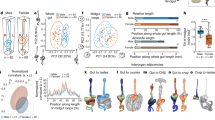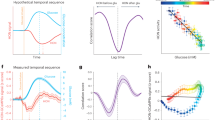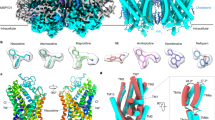Abstract
It has been shown by a number of investigators that L-thyroxine is more active in vivo than is D-thyroxine1. In most in vitro systems, however, the D-and L-isomers are equally effective. The equal activity of D- and L-thyroxine in altering the morphology of mitochondria and in ‘uncoupling’ oxidative phosphorylation are examples of this2,3. Previous experiments4 in this laboratory have compared the distribution and excretion of labelled D- and L-thyroxine labelled with iodine-131 following a single injection of a tracer quantity of each compound into the tail vein of the rat. Initially, D-thyroxine was concentrated to a greater extent in the liver and kidney than was L-thyroxine, but after 24 hr. the concentrations were approximately equal. However, the concentration of D-thyroxine in tissues such as muscle, brain and skin was much less than the concentration of L-thyroxine. This difference in distribution to the peripheral tissues was of such magnitude as to suggest a possible basis for the different activities of the two isomers in vivo. Others have shown5,6 that the oxygen consumption of certain tissues (for example, liver, kidney and muscle) from animals injected with DL-thyroxine is significantly greater than normal, whereas that of other tissues (for example, brain) is not increased. The current investigation was undertaken to determine whether the differences demonstrated in the distribution of the two isomers could be correlated with a difference in their ability to stimulate the oxygen consumption of the several tissues.
This is a preview of subscription content, access via your institution
Access options
Subscribe to this journal
Receive 51 print issues and online access
$199.00 per year
only $3.90 per issue
Buy this article
- Purchase on Springer Link
- Instant access to full article PDF
Prices may be subject to local taxes which are calculated during checkout
Similar content being viewed by others
References
Selenkow, H. A., and Asper, S. P., Physiol. Rev., 35, 426 (1955).
Tapley, D. F., J. Biol. Chem., 222, 325 (1956).
Tapley, D. F., and Cooper, C., J. Biol. Chem., 222, 341 (1956).
Tapley, D. F., Davidoff, F. F., Hatfield, W. B., and Ross, J. E., Amer. J. Physiol., 197, 1021 (1959).
Gordon, E. S., and Heming, A. E., Endocrinol., 34, 353 (1944).
Barker, S. B., and Klitgaard, H. M., Amer. J. Physiol., 170, 81 (1952).
Umbreit, W. W., Burris, R. H., and Stauffer, J. F., “Manometric Techniques and Tissue Metabolism” (Burgess, Minneapolis, 1952).
Author information
Authors and Affiliations
Rights and permissions
About this article
Cite this article
DUNNE, P., TAPLEY, D. Oxygen Consumption by Tissues from Rats injected with L- or D-Thyroxine. Nature 185, 622–623 (1960). https://doi.org/10.1038/185622b0
Issue Date:
DOI: https://doi.org/10.1038/185622b0
Comments
By submitting a comment you agree to abide by our Terms and Community Guidelines. If you find something abusive or that does not comply with our terms or guidelines please flag it as inappropriate.



